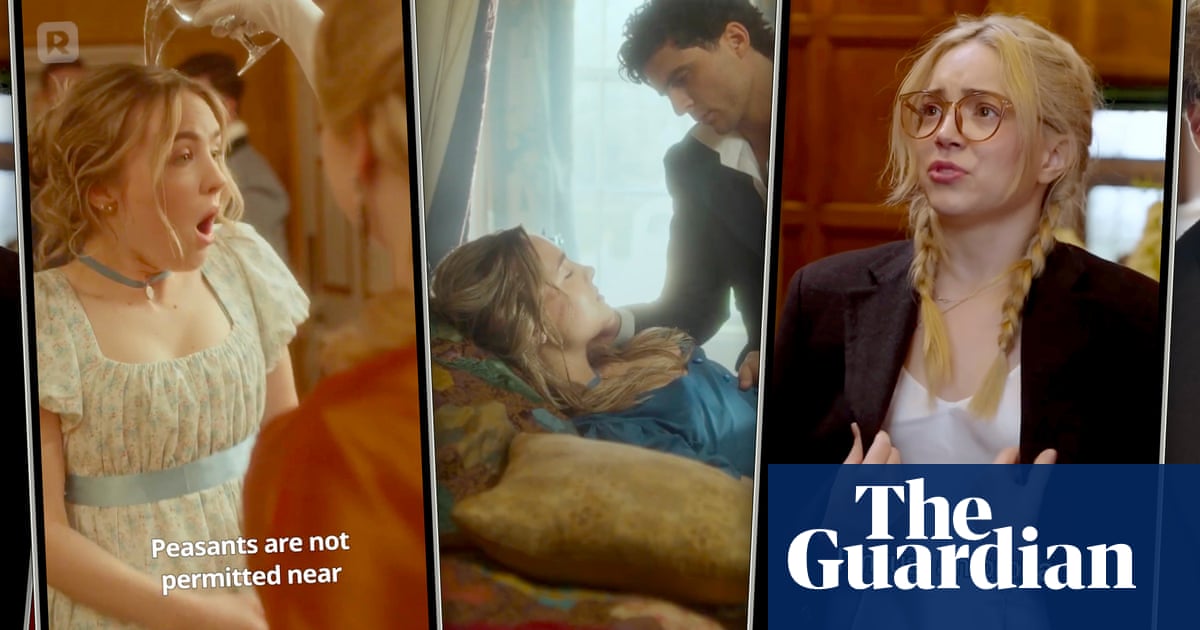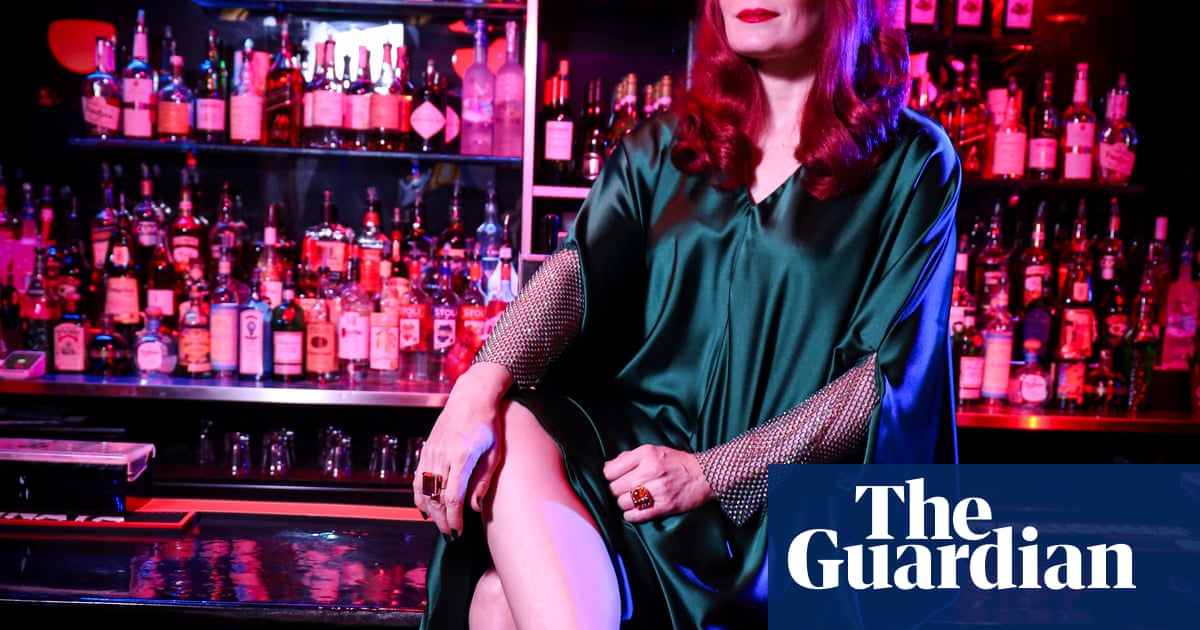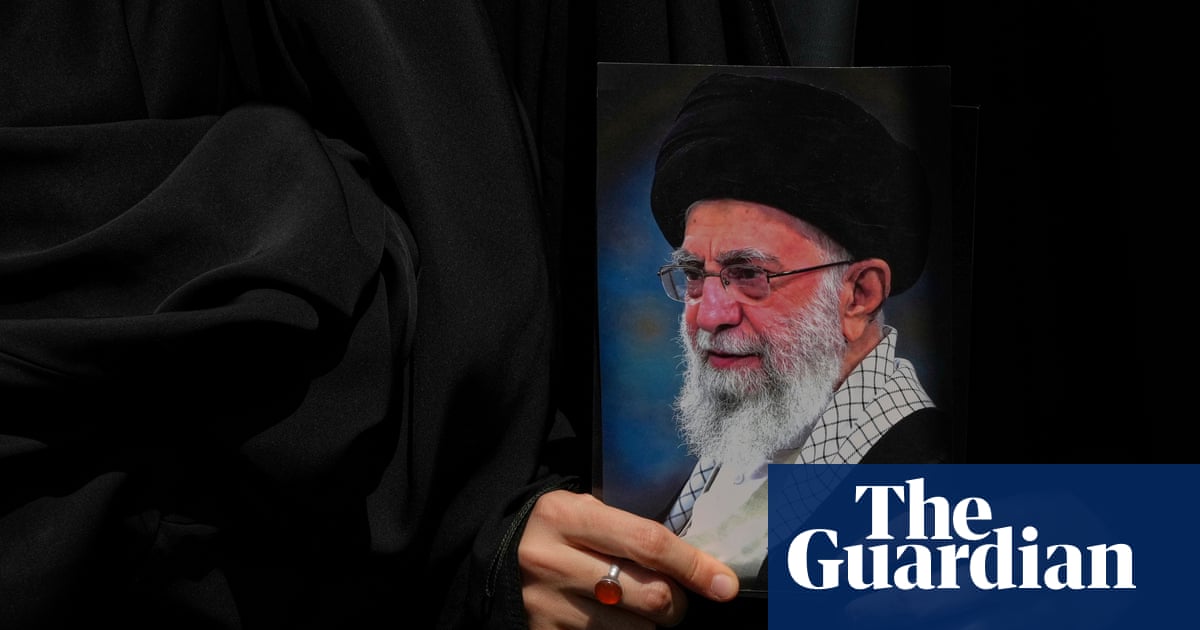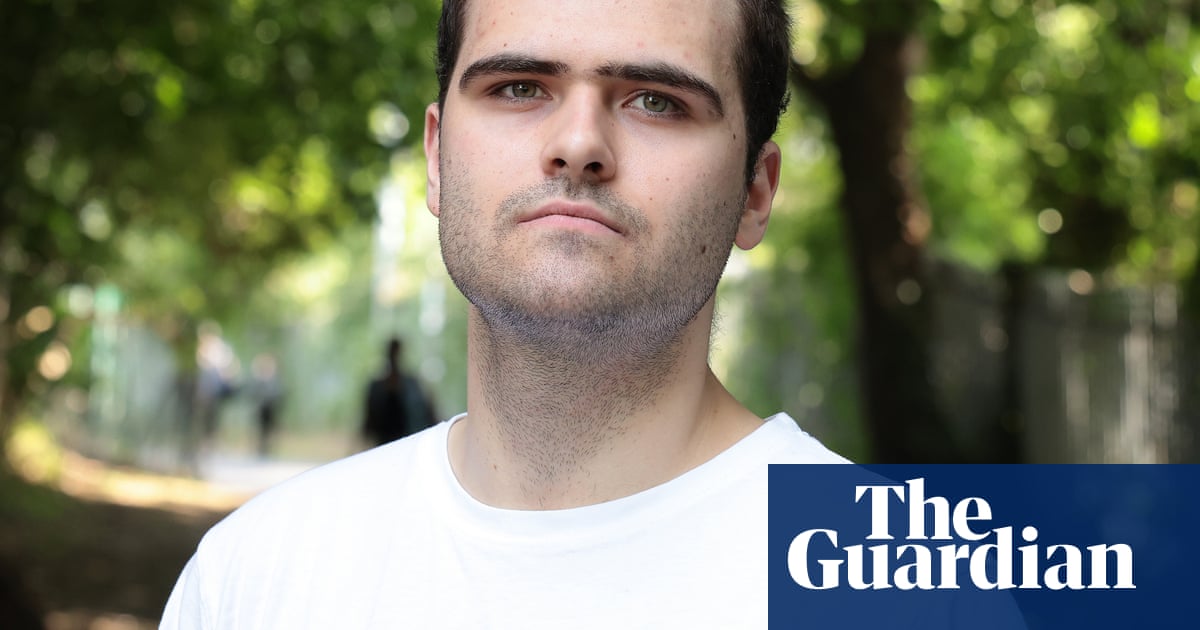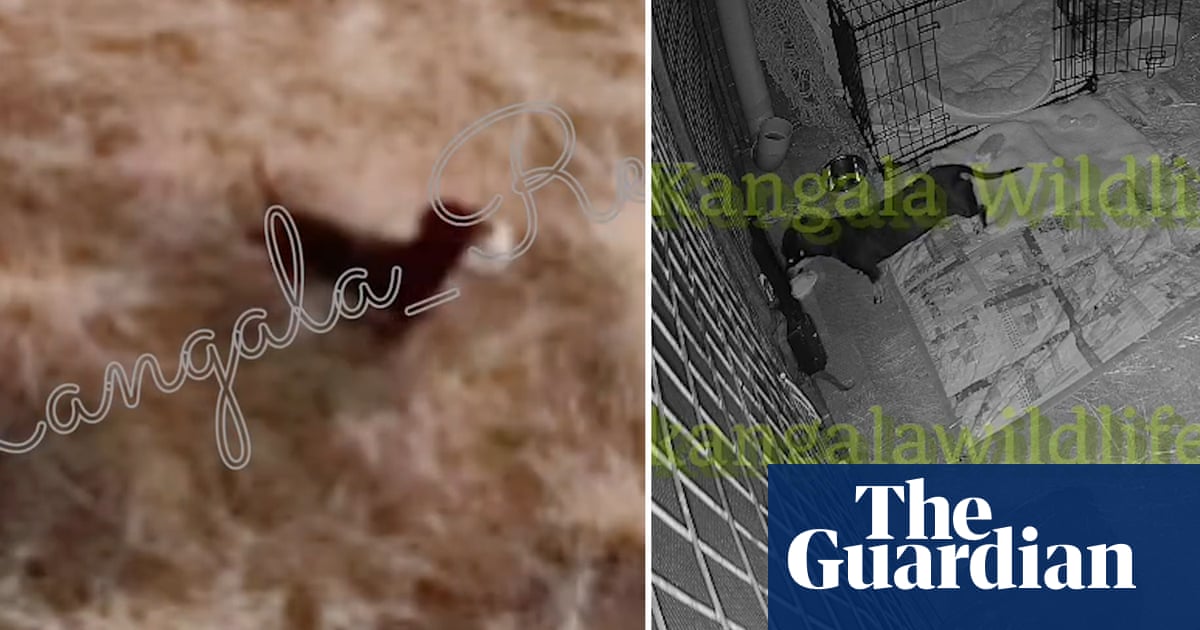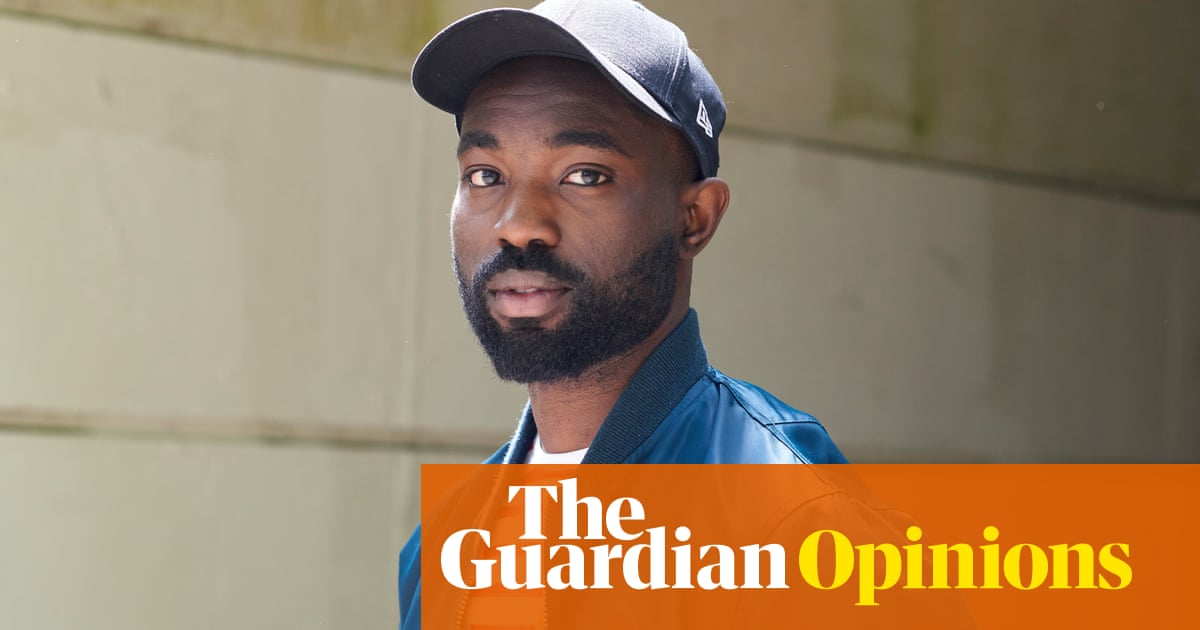Sitting in his house in Rome, an overstuffed bookcase and a distressed wooden door behind him, Willem Dafoe scrunches his hair as though kneading the thoughts in his head. The 69-year-old, Wisconsin-born actor could pass today for any genial, bristle-moustached handyman in checked shirt and horn-rimmed specs. (Perhaps he even built the bookcase and distressed the door himself.) But it’s that hand that is the giveaway: it keeps scrunching as he talks until the hair is standing in jagged forks. As a visualisation of what is happening in his brain, it is second to none.
We are speaking in April on the anniversary of Shakespeare’s birth (and death), which feels apt given that it is Dafoe’s two-year appointment as artistic director of the international theatre festival at the Venice Biennale that has occasioned our video call today. He looks sheepish when I point out the significance of the date, then reverts to his usual wolfish expression. “Ah, Shakespeare doesn’t care,” he says with a wave of the hand. Dafoe has never had much of a relationship with those plays. “There’s a lot of pointing and indicating when people perform them. A lot of leading the audience. Those are things I don’t think are very vital. But it’s such beautiful writing, and I’ve become interested in doing Shakespeare in my dotage.” Could there be a Lear on the horizon? “Why not?” he says with a goofy wobble of the head.
There is no Shakespeare in Dafoe’s Biennale selection. The accent, in a programme entitled “Theatre is Body. Body is Poetry”, is firmly on the experimental and avant garde. There will be work directed by Thomas Ostermeier and Milo Rau. Davide Iodice will present a version of Pinocchio in which young autistic actors and actors with Down’s syndrome will bring to life assorted incarnations of the title character. Dafoe has also included the European premiere of Symphony of Rats by Richard Foreman, the experimental playwright who died in January, and whom he counted as a friend. Nearly 40 years after its first production, the play will be staged by the pioneering New York company the Wooster Group, which Dafoe co-founded. “Richard told them, ‘Do whatever you want with it. But I don’t want to recognise it,’” he says admiringly.
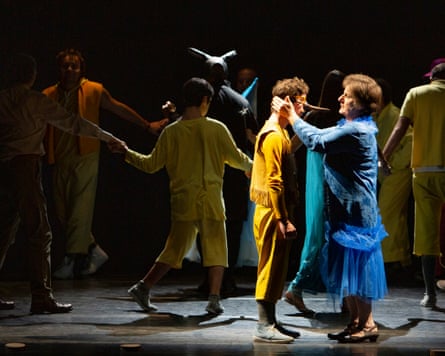
The actor will take part in Foreman’s No Title, during which he and Simonetta Solder will read phrases from cards drawn at random in what sounds like a theatrical cousin of the Burroughsian cut-up technique. “Richard was a loose thinker,” he explains. “His responses were always unpredictable.” Dafoe is approaching his Venice tenure with the same sangfroid he witnessed in Foreman. “Some of these pieces will sail, some won’t. What’s important is people talking about stuff, feeling that the theatre is alive.”
A four-time Oscar nominee, Dafoe has been a transfixing screen presence ever since his Kabuki-like turns in the early 1980s in Kathryn Bigelow’s fetishistic biker movie The Loveless and Walter Hill’s pulp fantasy Streets of Fire, where he sported black vinyl hip-waders, a ducktail hairdo and cheekbones that could win in a knife fight. He was the sergeant who perishes to the sound of Samuel Barber’s Adagio for Strings in Oliver Stone’s Platoon, then made the messiah crushingly human in Martin Scorsese’s The Last Temptation of Christ. More recently he has appeared in films by Wes Anderson, Robert Eggers and Yorgos Lanthimos. In Lars von Trier’s Antichrist, he had his penis pulverised by Charlotte Gainsbourg. Well, it’s a living.
His roots and his heart, however, belong to experimental theatre. Along with his former partner Elizabeth LeCompte, the monologuist Spalding Gray and others, Dafoe created the Wooster Group in the latter half of the 1970s from the ashes of Richard Schechner’s Performance Group. For nearly 30 years, Dafoe wrote, acted and helped build sets in the same converted factory in lower Manhattan that remains the group’s base today. He only drifted away in 2004 when he left LeCompte – with whom he has an adult son – and married the film-maker Giada Colagrande.
Could those of us who have never seen him live on stage truly be said to “get” who he is as an actor? “I think I’ve given up on the idea of anyone getting me,” he admits. “I probably had it when I was younger. Now I like the idea of every project redefining you.”
He pitched up in New York at 22, fresh from another experimental group, Milwaukee’s Theatre X. “I didn’t have anything up my sleeve. I was just a kid from the midwest going to the big, bad city. New York was rough then, but I saw these people who were making things outside of any commercial system. They stirred something in me intellectually, emotionally, romantically. That’s what I went towards. I made myself available to them and they liked that sense of availability. I started working very modestly, doing small parts and being a carpenter. Then Spalding invited me to work on the creation of a piece called Point Judith.”
Nothing short of a time machine could return us to the intoxicating heyday of New York’s fringe theatre scene, but there are mouth-watering titbits available online showing Dafoe at work in pieces stretching back to the late 1970s. The clips don’t seem too far from his more berserk screen creations, such as the sleazy crook Bobby Peru, rotten of mind and tooth, in David Lynch’s Wild at Heart, or the feverish seadog with a Popeye pipe in Eggers’ The Lighthouse. A clip from Point Judith, for instance, shows Dafoe standing in the sea dressed as a nun while brandishing a fish. “Well yeah, that was a small part of it,” he concedes, perhaps eager not to have decades of intrepid theatrical adventures reduced to a trout and a wimple.
Skip forward to the group’s 1991 show Today I Must Sincerely Congratulate You, and this time he is wearing a suit and a moptop like an early-1960s Beatle, and once again holding a dead fish. What gives? “I’m in to fish,” he shrugs. “So there.”
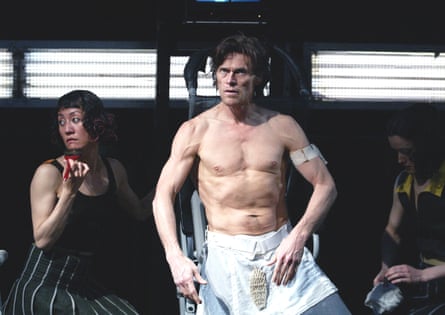
The concept of a Wooster Group piece being “ready” was always elastic. The company would simply rehearse throughout the day and perform whatever they had that evening. The headline to a 2020 Harper’s article summed up the philosophy nicely: “The 40-Year Rehearsal: The Wooster Group’s endless work in progress.” Film was often incorporated into the shows, along with prerecorded audio to which the cast would sometimes lip-sync. The material featured unlikely bedfellows: Flaubert and Lenny Bruce, say, or a soap opera version of Thornton Wilder’s Our Town coupled with the vaudevillian skits of the African American comic Pigmeat Markham.
Acclaim was not universal. Arthur Miller refused to permit the group to perform part of The Crucible in their show LSD, but they carried on anyway until he threatened legal action. The estates of Harold Pinter and Tennessee Williams also withdrew permission. Brickbats rained down from critics, Dafoe tells me. “We were given a hard time. Eventually we found that word-of-mouth was better than a snarky review in the Village Voice, so Liz, in her infinite wisdom, stopped allowing the critics in. Once we started to have some appreciation in Europe, the New York critics began asking to come. This time they were more generous with how they placed us in the landscape.”
The Wooster Group’s influence today is ubiquitous. Take the use of microphones in Ostermeier’s work, including his recent, vital production of The Seagull with Cate Blanchett. “Yeah, the microphones were a thing we did that I started seeing crop up a lot,” Dafoe agrees. “We started out working somewhat in isolation. Once we started touring, we’d come back to places and say, ‘Wow, that looks familiar.’ I don’t mean that in a snotty way – it’s how things work. People came through as interns and then 10 years later they would be Broadway directors.”
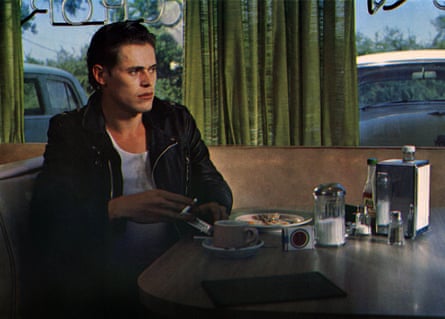
Anyone who has seen productions by Complicité will have witnessed the Wooster effect. “Simon McBurney’s a friend, and definitely he saw the work. He’s a sponge.” McBurney was also one of the writers on Mr Bean’s Holiday, in which Dafoe plays a pretentious arthouse director whose Cannes premiere is hijacked by Rowan Atkinson’s slapstick hero. “Simon directed the film-makers toward me, so I can thank him for that particular experience,” Dafoe laughs. The traffic flows both ways: he in turn suggested McBurney for roles in Abel Ferrara’s Siberia and Eggers’ recent Nosferatu, neither of them half as much fun as Mr Bean.
Dafoe is diplomatic today about whether he prefers acting for theatre or cinema. “Musicians are musicians – sometimes they play in the studio and sometimes they play live.” But evidently it is the stage that unlocks his deepest passion. “What you’re seeing isn’t going to happen again at nine o’clock, eleven o’clock. Something beautiful in the theatre stays with you for ever, because it happened to you. Theatre puts your feet to the fire, it puts your finger in the wound.” The hand has stopped scrunching now. “And you can’t beat that.”

 1 month ago
69
1 month ago
69
